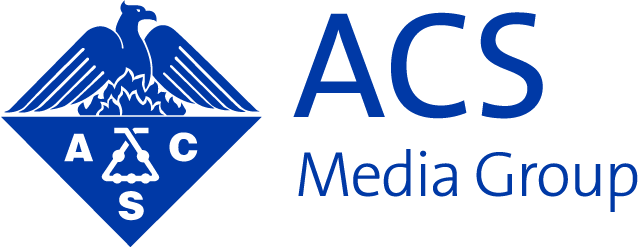The story of content creation is told often: brainstorm, write, design, distribute…and wait? Unless you have a clear understanding of how to measure the results of your marketing, you’ll have no idea if it is successful. Understanding a few key metrics can guide your marketing initiatives and help you produce high-impact campaigns.
The 5 Metrics that Will Always Matter
Metrics guide your campaigns by helping you understand what kind of information your audience is consuming, but they are also valuable to demonstrate success to key stakeholders in your organization. With the right metrics, you can justify continued science marketing efforts. Such as….
Clickthrough Rate
Clickthrough rate (CTR) is a metric relevant to several kinds of marketing.
In email marketing, CTR tells you how many users followed your call-to-action link – which could be to a dedicated campaign landing page, technical whitepaper, your scientist’s latest industry event presentation or a page on your website. In SEO, CTRs help you modify your meta descriptions to maximize the traffic from your search rankings. Online banner and pay-per-click ads can track CTR to help you identify your most effective messaging.
It’s even possible to determine a kind of clickthrough rate from print advertising. Including unique URLs in print advertisements allows you to identify a section of your audience engaged by print. Compare the number of unique URL visitors to the potential reach and you have a version of CTR for print.
Impressions
How many people are seeing your brand? Impressions let you know which outlets are giving you the most reach, and can combine with other metrics to give you a more complete picture of your marketing success.
Impressions are often a useful metric for campaigns that revolve around building awareness.
Impressions can be used as a metric in print ads, banner ads, social media posts and promotions, pay-per-click ads, or organic search results pages. Impressions are often a useful metric for campaigns that revolve around building awareness. Especially for branding campaigns or product launch teasers, clicks may not be as important as a large number of impressions.
Although a high number of impressions doesn’t automatically equal a successful ad, understanding your impressions can help you better target the right channels for your company.
Traffic
If your website is not focused on increasing traffic, you are missing a big opportunity to attract new leads for your products and services.
Websites and search engines are now standard methods for finding products; according to one study 94% of business buyers do some form of online research before making a purchase. The science community has often relied on face-to-face selling, but scientists are not immune to this digital trend. A search-optimized website is more important now than ever, and can bring in new leads and contact information for your sales team.
If you already have substantial website traffic, you can use traffic patterns to help your marketing efforts. Particular pages that are attracting a lot of traffic can offer additional insights into your audience’s needs, allowing you to identify new marketing and sales opportunities to meet the current demand.
At the same time, knowing where your traffic is coming from is also important. Traffic from trade publication websites is more likely to be highly targeted members of your audience, and lead to quality prospects. Search traffic going to a general explanation of “epigenetics” on the other hand, may be attracting students looking for a definition of the term.
Traffic is not the be-all and end-all of metrics, but reaching a minimum threshold of targeted traffic is necessary for effective online marketing. Understanding the traffic picture—from raw numbers to traffic sources—helps you do better marketing, especially in a niche area like the sciences.
Conversion Rate
After developing a steady stream of traffic or impressions, it’s important to understand conversion rates.
Determining a “good” conversion rate depends on your industry and the goals of your website. Are you trying to collect email addresses for general inquiries? Setting up one-on-one consultations? Providing samples? Regardless of your answer, your conversion rate is the number of people that complete your goal divided by your total traffic.
Tracking conversion rates over time, and conducting A/B tests on copy and calls-to-action, can help you set conversion goals for future campaigns. There may also be organizations that report on industry averages; email provider MailChimp, for example, releases information on email open rates by industry.
If you aren’t hitting your conversion rate goals, there are improvements to make with your website content and online marketing. It could be that you are attracting the wrong traffic, that your offer doesn’t appeal to your audience, or that the messaging around your offer is confusing or vague. A low conversion rate is a sign that you need to keep exploring.
Time on Page
A low conversion rate tells you something may be wrong; time on page can help you fix it.
If your visitors are staying on your website for a long time, you know that your content is appealing to them. If you still have a low conversion rate, changing the messaging or visibility of your opt-in may fix the problem.
In the world of social media, it’s also important to note that if your visitors are leaving your website quickly, it’s possible that you had content go “viral,” attracting a lot of visitors that read only one post before leaving. Which isn’t necessarily abnormal or ‘bad’, so be sure to check for this kind of spike in referral traffic, alongside higher bounce rate and lower time on page, before you make larger conclusions about your overall or YOY effectiveness.
If your digging doesn’t turn up a clear explanation for poor time on page, explore other options. Your content may not fully resonate with your audience, or your website is confusing to navigate and provides a poor user experience. You may consider conducting additional market research or consulting a user experience designer to help increase time spent on page.
If your digging doesn’t turn up a clear explanation, consider a site redesign. Learn the 10 steps to a successful site overhaul here.
Finally, time on page can guide your future marketing when cross-referenced with sources of traffic. If visitors from a particular source are spending more time on your website, focus on those channels! If bylined articles and search optimized articles are working, create more. If newsletter ad visitors are leaving quickly, it may be worth considering allocating those resources elsewhere or reevaluating the landing page.
Without metrics, deciding on the best marketing strategy is guesswork. Understanding marketing measurement can help you make the most of your science marketing.


















